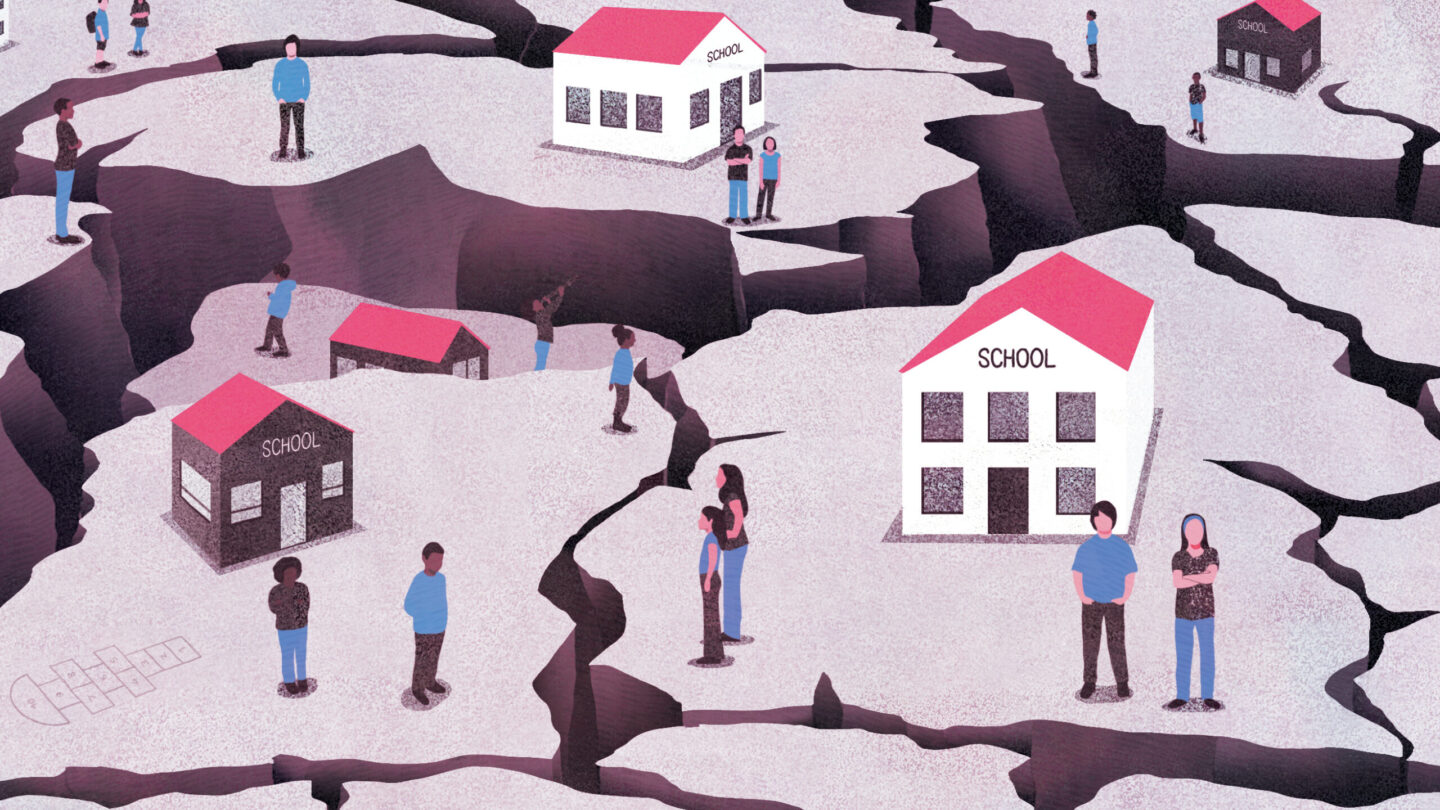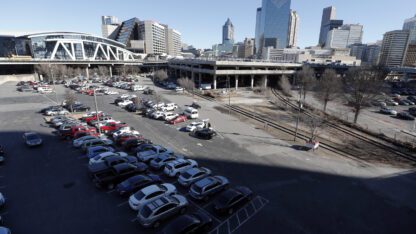The U.S. student body is more diverse than ever before. Nevertheless, public schools remain highly segregated along racial, ethnic and socioeconomic lines.
That’s according to a report released Thursday by the U.S. Government Accountability Office (GAO). More than a third of students (about 18.5 million of them) attended a predominantly same-race/ethnicity school during the 2020-21 school year, the report finds. And 14% of students attended schools where almost all of the student body was of a single race/ethnicity.
The report is a follow up to a 2016 GAO investigation on racial disparity in K-12 schools. That initial report painted a slightly worse picture, but findings from the new report are still concerning, says Jackie Nowicki, the director of K-12 education at the GAO and lead author of the report.
“There is clearly still racial division in schools,” says Nowicki. She adds that schools with large proportions of Hispanic, Black and American Indian/Alaska Native students – minority groups with higher rates of poverty than white and Asian American students – are also increasing. “What that means is you have large portions of minority children not only attending essentially segregated schools, but schools that have less resources available to them.”
“There are layers of factors here,” she says. “They paint a rather dire picture of the state of schooling for a segment of the school-age population that federal laws were designed to protect.”
School segregation happens across the country
Segregation has historically been associated with the Jim Crow laws of the South. But the report finds that, in the 2020-21 school year, the highest percentage of schools serving a predominantly single-race/ethnicity student population – whether mostly white, mostly Hispanic or mostly Black etc. – were in the Northeast and the Midwest.
School segregation has “always been a whole-country issue,” says U.S. Rep. Bobby Scott, D-Va., who heads the House education and labor committee. He commissioned both the 2016 and 2022 reports. “The details of the strategies may be different, but during the ’60s and ’70s, when the desegregation cases were at their height, cases were all over the country.”
The GAO analysis also found school segregation across all school types, including traditional public schools, charter schools and magnet schools. Across all charter schools, which are publicly funded but privately run, more than a third were predominantly same-race/ethnicity, serving mostly Black and Hispanic students.
There’s history behind the report’s findings
Nowicki and her team at the GAO say they were not surprised by any of the report’s findings. They point to historical practices, like redlining, that created racially segregated neighborhoods.
And because 70% of U.S. students attend their neighborhood public schools, Nowicki says, racially segregated neighborhoods have historically made for racially segregated schools.
“There are historical reasons why neighborhoods look the way they look,” she explains. “And some portion of that is because of the way our country chose to encourage or limit where people could live.”
Though the 1968 Fair Housing Act outlawed housing discrimination on the basis of race, the GAO says that in some states, current legislation reinforces racially isolated communities.
“Our analysis showed that predominantly same-race/ethnicity schools of different races/ethnicities exist in close proximity to one another within districts, but most commonly exist among neighboring districts,” the report says.
School district secessions have made segregation worse
One cause for the lack of significant improvement, according to the GAO, is a practice known as district secession, where schools break away from an existing district – often citing a need for more local control – and form their own new district. The result, the report finds, is that segregation deepens.
“In the 10 years that we looked at district secessions, we found that, overwhelmingly, those new districts were generally whiter, wealthier than the remaining districts,” Nowicki says.
Six of the 36 district secessions identified in the report happened in Memphis, Tenn., which experienced a historic district merger several years ago. Memphis City Schools, which served a majority non-white student body, dissolved in 2011 due to financial instability. It then merged with the neighboring district, Shelby County Schools, which served a wealthier, majority white population.
Joris Ray was a Memphis City Schools administrator at the time of the merger. He recalls that residents of Shelby County were not satisfied with the new consolidated district. They successfully splintered off into six separate districts.
As a result, the GAO report says, racial and socioeconomic segregation has grown in and around Memphis. All of the newly formed districts are whiter and wealthier than the one they left, which is now called Memphis-Shelby County Schools.
“This brings negative implications for our students overall,” says Ray, who has led Memphis-Shelby County Schools since 2019. “Research has shown that students in more diverse schools have lower levels of prejudice and stereotypes and are more prepared for top employers to hire an increasingly diverse workforce.”
The GAO report finds that this pattern – of municipalities removing themselves from a larger district to form their own, smaller school district – almost always creates more racial and socioeconomic segregation. Overall, new districts tend to have larger shares of white and Asian American students, and lower shares of Black and Hispanic students, the report finds. New districts also have significantly fewer students eligible for free or reduced-price lunch, a common measure of poverty.
Copyright 2022 NPR. To see more, visit https://www.npr.org.
9(MDAxODM0MDY4MDEyMTY4NDA3MzI3YjkzMw004))

9(MDAxODM0MDY4MDEyMTY4NDA3MzI3YjkzMw004))









